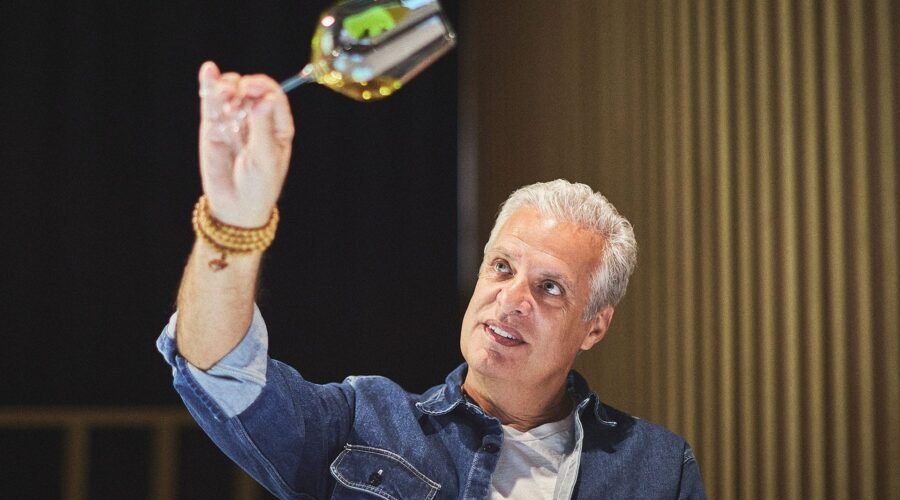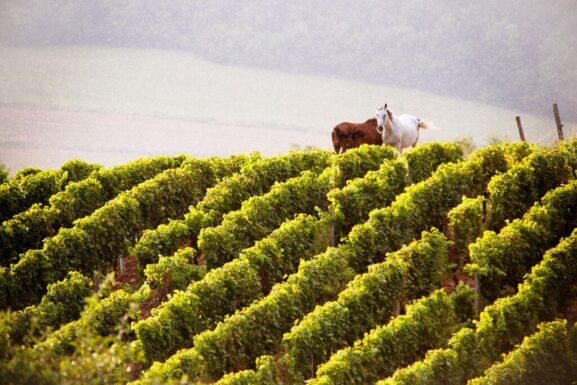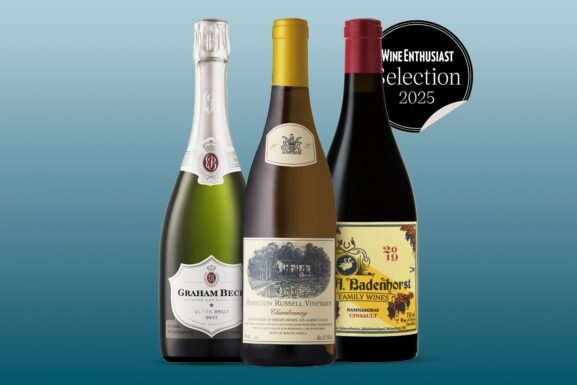Culture: Eric Ripert’s Eating and Drinking Guide to Castilla-La Mancha
If Castilla-La Mancha sounds familiar, perhaps it’s because you’ve read the Spanish epic novel Don Quixote. Or maybe you’ve heard of its regional capital Toledo, a walled city and UNESCO World Heritage site. For those, however, to whom this region in central Spain doesn’t ring a bell, it should.
Located about a 30-minute high-speed train ride away from Madrid, Toledo is a worthy starting point for exploring this agriculturally rich region, which also happens to be home to 11 Michelin-starred restaurants. Beyond the city’s ancient walls, the surrounding region is dotted with vineyards, creameries and olive groves, with the fish-laden Tagus River running through it.
Recently, Michelin-starred chef Eric Ripert of New York City’s Le Bernardin visited the region with 50 Best (the organizers behind The World’s 50 Best Restaurants), to film a short documentary on the region. As a writer, I was invited to tag along.
I found that despite his bonafides, chef Ripert’s culinary leanings do not, in fact, entirely skew high end. It’s a blessing in this part of the world, where many of the cuisine’s highlights are not necessarily the most fanciful. Of course, there are plenty of those in supply, too.
Here are Chef Ripert’s food and drink highlights in Castilla-La Mancha.
You May Also Like: Barcelona’s Best Dining Destinations for Wine Lovers
Farms
Finca la Prudenciana
It turns out that Ripert is a major fan of Manchego cheese. “We have Manchego all the time,” he says. “If not in the morning, then I have it late at night. So, he was eager to see where the flagship cheese of Spain is made.
To legally be called Manchego according to EU law, it must be produced in Castilla-La Mancha. One of the best places to see the process is at Finca la Prudenciana, a family-owned sheep farm and creamery in the small town of Tembleque. This is where the globally-available, small-batch Artequeso brand of artisanal Manchego cheeses are made, using raw milk from the resident flock of sheep. The cheeses are then aged on-site for between three and 12 months. It’s owned and run by husband-and-wife Alfonso and Maria Álvarez Sánchez-Prieto together with their children, Marta and Santiago.
“I was very impressed by the way they make Manchego, because they use all the modern techniques that are needed today to be able to sell Manchego worldwide,” says Ripert. “But at the same time, they keep certain traditional aspects in their way of making it.”

Finca la Pontezuela
Spain is one of the world’s major olive oil producers, and Castilla-La Mancha is the second-largest producing region in the country. Located in the heart of the Montes de Toledo, Finca La Pontezuela has 18,000 trees growing five types of olives, including the rare redondilla olive. According to the family owners, they are one of only two farms in Spain to grow redondillas.
“That type of olive is very difficult to find,” says Ripert. “When I have something special and delicious like that, I’m dreaming about what I could do with it.”
Visitors to the farm tour the verdant olive groves and a modern oil mill. They also explore the state-of-the-art, interactive visitors center built in 2020. It explains everything you’d want to know about olives and olive oil via videos, touch screens, interactive maps and visual guides that show how olive oil is harvested and produced.
You May Also Like: The Story Behind Piro, Tuscany’s Buzziest Olive Oil
Tastings of their 5 Elementos brand of olive oils are also offered, including those made with single varietals. The picual olive oil is the spiciest, while the redondilla is smooth and flavorful.
Ripert says the experience is “the opposite of going to the supermarket,” where the average bottle of olive oil often “has no flavor.”

Bodega Loranque
This ancient winery dates to the Roman period; the ancient Vía XXV Augustobrigam-Caesarobrigam-Toletum road crosses right through the property. It was around the 11th century that the Lord of Loranque El Grande likely planted some vines on this land. At the end of the 18th century, a French-style winery was built. Back then, the wine was fermented in traditional earthenware jars, which can be seen on the property today as decor.
In 1982, the Díaz Bermejo family purchased the winery, releasing its first vintage in 2002. Today, the winery produces award-winning red wines including a Syrah, Tempranillo, Cabernet Sauvignon and various blends. It’s open for tours and tastings. Ripert describes the red wines he tasted as “fairly young, but top notch.”
“Twenty or 30 years ago, Spain—except for a few exceptions—didn’t really make excellent wines. In general, they were producing quantity but not necessarily quality,” he says. The situation is much different today. “They are very much aware of what needs to be done to make a great wines,” Ripert continues. “They have a good terroir, they have good soil, they have good vines, and now they’re using all the help they can from technology.”
Restaurants and Bakeries

Santo Tomé Obrador de Mazapan
Toledo has a claim to the invention—or, more likely, the popularization—of marzipan, the almond-and-sugar-paste delicacy, which has been made here at least dating to the 1500s. (For what it’s worth, the treat is also claimed by the city of Lubeck in Germany and Sicily in Italy. Persia is its most likely place of origin.)
Santo Tomé, one of Toledo’s oldest businesses, has been making fresh marzipan daily since 1856, and the smell of freshly made marzipan wafts through the air to the constant line of customers outside.
The six-generation family-run bakery uses only fresh, locally grown Marcona almonds, sugar and honey run through a mill to make its marzipan. The sticky paste is used as the main ingredient in all kinds of delicious baked treats.
“It reminded me of when I was a kid, and I was eating marzipan like crazy because my mother was using marzipan to stuff dates and prunes and things like that, and she would give these out on the weekend or during the holidays,” recalls Ripert. “The quality of marzipan at Santo Tomé is very rare to find. They are using the best ingredients.”

Raíces-Carlos Maldonado
A blank facade next to a graffitied wall is the entrance to this whimsical one-Michelin-starred restaurant in the village of Talavera de la Reina.
“This restaurant looks like nothing from the outside—no name, nothing. And then you walk in, and you’re in this artsy, kind of secret hideaway thing,” describes Ripert, referring to a large mural in the entryway and details like white ceramic rooster heads that protrude from the dining room walls.
Here, chef Carlos Maldonado runs the show from a tiny kitchen, turning out an elaborate tasting menu that manages to be playful despite the deployment of complex techniques. Maldonado’s influences range from Castilla La-Mancha itself to his first cooking job in a food truck, as well as his family and travels in places like Puebla, Mexico.
Ripert dined on dishes like squab tacos with mole and what are essentially tequila-lime Jell-O shots served in the mouth of a ceramic snake. Each dish was displayed on unique ceramic pieces that featured everything from a giant red Michelin star to Maldonado’s son’s handprints. All of the pottery is designed by the staff and made by local ceramicist Fran Agudo.
“Maldonado is the wildest—he has no fear, he’s just having fun, while using traditional ingredients,” says Ripert. “[Raíces] is a mix of formal and playful, and you would never expect that in the countryside.”

Restaurante Iván Cerdeño
Just outside the walls of Toledo is the dramatic stone entrance of Cigarral del Ángel, which was the estate of the poet Fina de Calderón until her death in 2010. The grounds are stunning, with lush gardens and panoramic views of the Tagus River and Toledo. Today, it’s the site of lauded chef Iván Cerdeño’s two-Michelin-starred restaurant.
Cerdeño draws inspiration from the 16th-century cookbook by Ruperto de Nola called Libro de Guisados (Book of Stews), which was published in Toledo. He sources ingredients from surrounding farms and the Tagus River, including its super-rare baby eels.
“Baby eels are difficult to find and are very expensive,” explains Ripert. “Today, it’s very regulated around the world because there are quotas in Spain and they’re protected—after a certain amount of baby eels have been caught, they have to stop. So, it’s sustainable, but it’s very expensive—and it’s rare to find people who know how to cook them well.”
Definitely splurge on the wine pairing here, which includes local and rare bottles like aged Sherry, Spanish cidre and vintage wines.
You May Also Like: How Wine Pros Navigate One of the Largest Private Cellars on Earth

Ancestral
For modern, live-fire cooking, head to a nondescript block in the industrial town of Illescas. Ancestral is the brainchild of young chef Victor Gonzalo Infantes, who grew up nearby and returned after a stint at some of Madrid’s top restaurants.
“I was fascinated by the small kitchen here, because [Infantes] cooks with wood-burning ovens, and smokes massive pieces of meat,” says Ripert.
Both the food and decor at this one-Michelin-starred restaurant lean rustic, with dishes like a traditional stew made with pigs’ ears and Castilian chickpeas, wild cherry tomatoes in an Iberian ham broth and local trout in a pil pil sauce made from the fish’s smoked bones and roe. There are two tasting menus to choose from (Origen and Esencia), with rotating dishes depending on what’s in season.
Published: November 10, 2023


